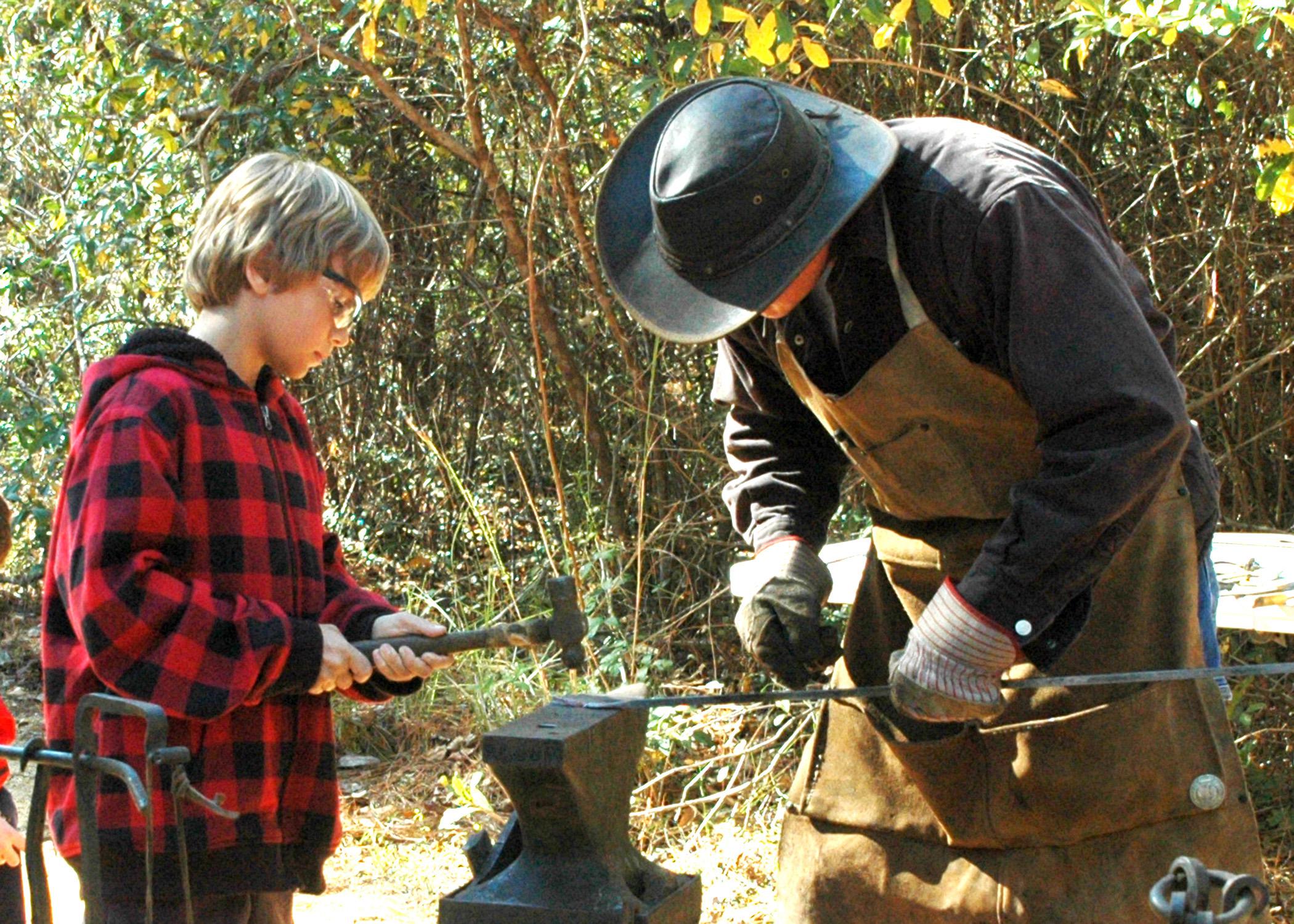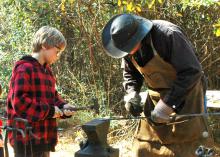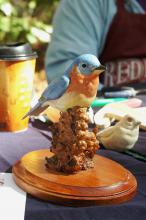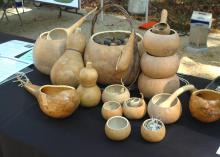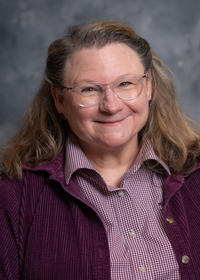Information Possibly Outdated
The information presented on this page was originally released on November 20, 2012. It may not be outdated, but please search our site for more current information. If you plan to quote or reference this information in a publication, please check with the Extension specialist or author before proceeding.
Festival showcases local heritage, arts
PICAYUNE -- Artisans and historians of the Piney Woods region took visitors on a trip back to their roots on Nov. 17 and 18.
Participants demonstrated old time skills and crafts, such as blacksmithing, basket-making, quilting, spinning and woodcarving, at the Piney Woods Heritage Festival at Mississippi State University’s Crosby Arboretum.
“We have a quality group of artisans and historians here this weekend,” said Pat Drackett, Crosby Arboretum Director. “This region has incredible history and culture, and we are excited that they want to share their knowledge so that the history of our region is not lost.”
The festival was open exclusively to school groups on Nov. 17. Scott Langlois, a research associate at MSU’s South Mississippi Branch Experiment Station, pressed and cooked sugar cane and talked to students about heritage sugar cane breeds. This was the first year the festival has had a sugar cane exhibit to demonstrate the pressing and cooking process for making syrup.
Festival goers enjoyed live music by Hazel and the Delta Ramblers, the Pearl Strings Dulcimer Group, The Jordan River Band and Indian Summer on Nov. 18.
Exhibitors have a passion for their skill and want to ensure others have an appreciation for it.
Chuck Averett, a fourth-generation blacksmith, said blacksmithing is more than a hobby for him.
“My grandfather made his living doing this, and so did my father through the mid-1980s,” Averett said. “I am interested in the tradition, how things were done 100 years ago. My shop at home is a modern building, but when you walk inside, it’s like stepping back in time. I make all my own tools, besides hammers. But eventually I’ll make those as well.”
Other exhibitors shared information about the region’s history.
Bob Rouse is one of few producers who raise purebred Pineywoods cattle, a versatile, hardy breed brought to the Americas by the Spanish beginning in the 1500s. Early inhabitants used them for timber harvesting, crop production, beef production and milk production.
“My grandfather owned Pineywoods cattle,” said Rouse, who lives on the property near Carriere that was homesteaded by his great-grandparents. “I thought the breed was extinct because of cross-breeding. When I found out there were less than 200 left, I wanted to help make sure they don’t die out.
“To me it’s a sad thing that parts of our heritage are in danger of being lost,” Rouse said. “My grandfather took pride in his family’s ability to be self-sufficient and live off the land. I feel a connection to that, and cherish knowing that I am part of that.”
John Houston, a woodcarver, said skills such as his have become increasingly rare.
“The younger generation has become accustomed to a fast pace, and this takes time,” Houston said. “There is no necessity for this skill anymore. People used to make their own utensils. Hunters made their own decoys. Now it’s more of a hobby for people.”
Houston carves and paints his items, many of which are made from water tupelo wood.
“The time it takes to complete a piece depends on its size and the amount of detail it has,” said Houston, who also teaches a class on woodworking. “Smaller pieces will take a weekend to carve, but larger pieces like a decorative decoy will take about 400 hours to carve. Painting them will take an equal amount of time. It will take seven to eight processes to get the correct detail on a bird’s feather.”
Drackett said the two-day festival drew approximately 400 students, teachers and families.
“We don’t have a huge crowd, but that just makes it that much more special for those who attend,” she said. “Visitors have the chance to interact with our exhibitors one-on-one.”

